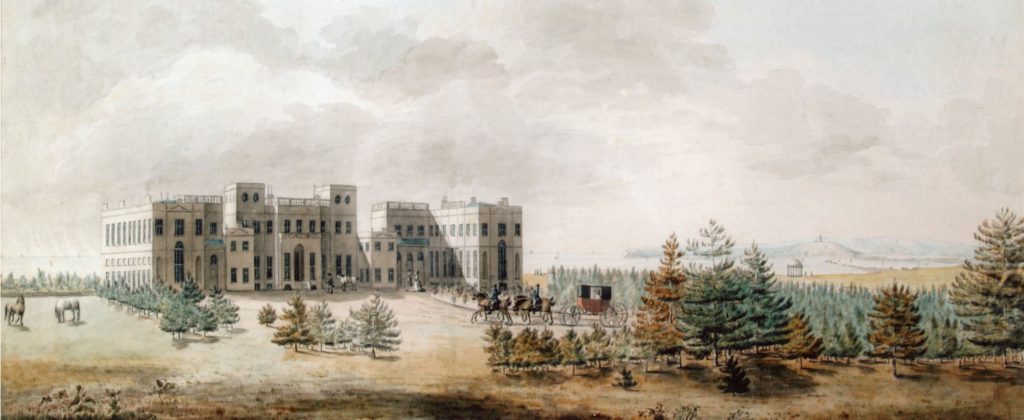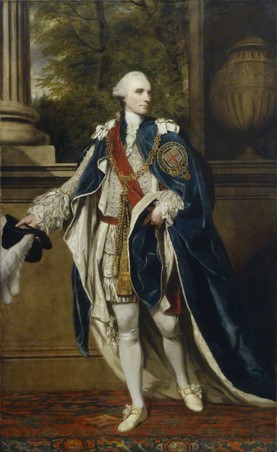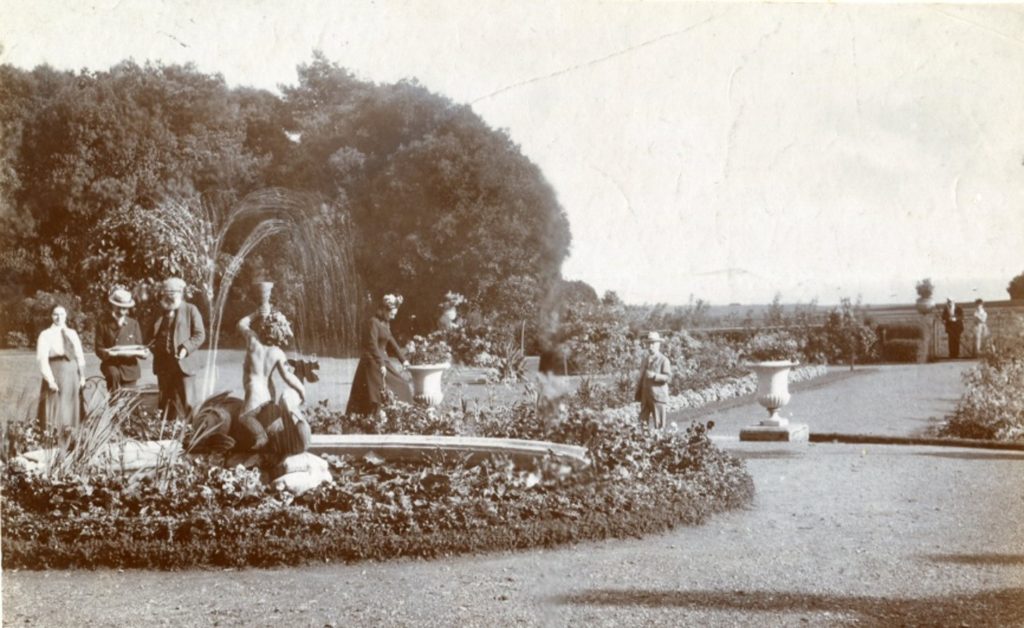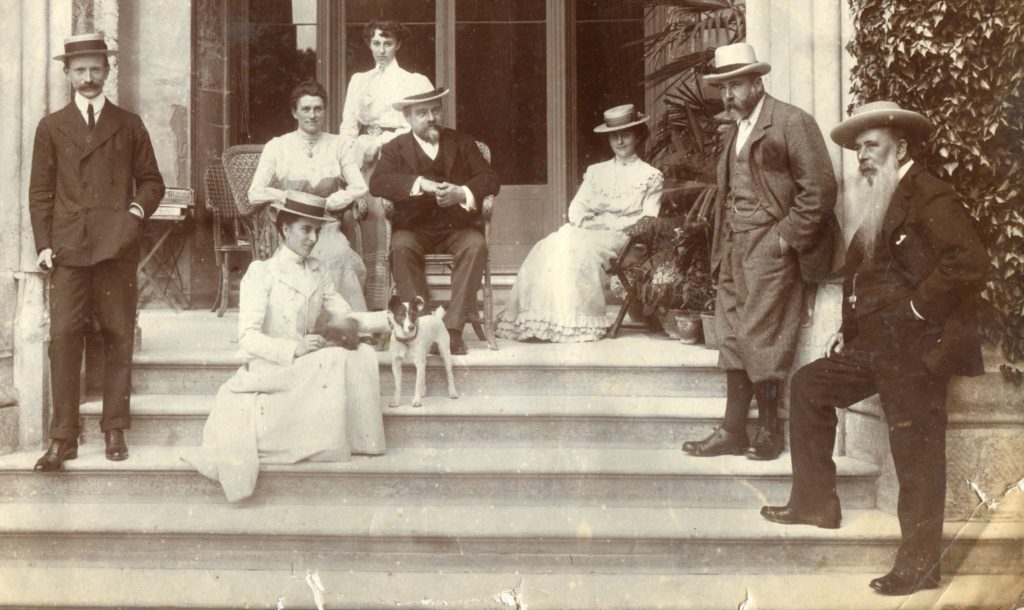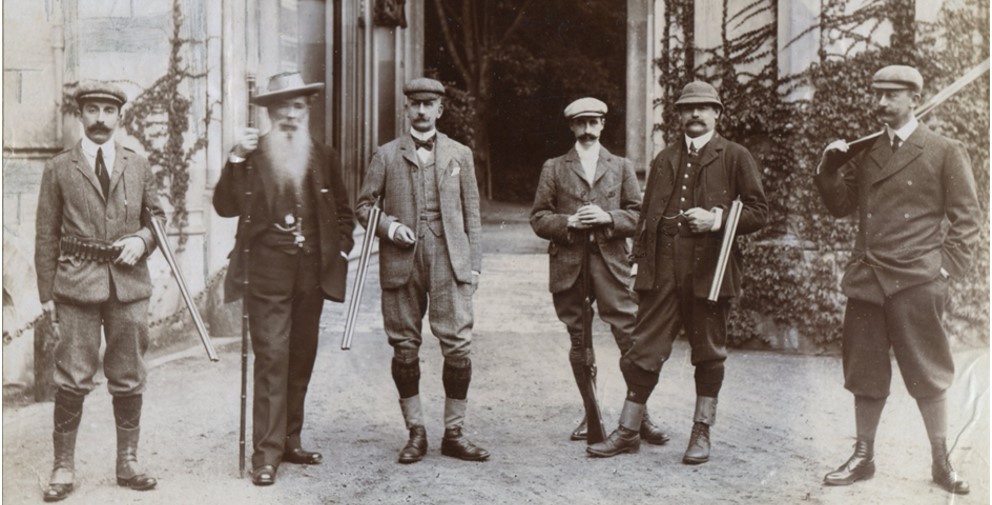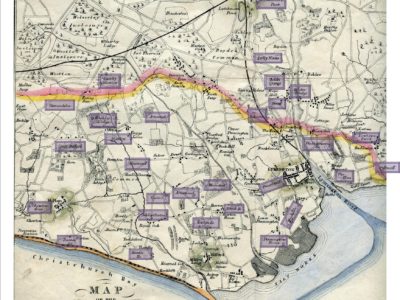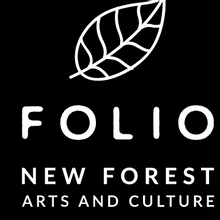John Stuart (1713-1792), Lord Bute, was a Scottish nobleman who was a close friend of Frederick, Prince of Wales and became mentor and tutor to his son, later George III. He was appointed Prime Minister in 1762 but lasted less than a year when his tax on cider proved extremely unpopular and he lost the support of the King.
In his later years he turned his attention to his life-long interest in natural history. He came to the New Forest in the 1770s in search of rare plants and was captivated by the view from the cliff of Christchurch Bay. He decided to build himself a house there, called High Cliff, and work started in 1775. What started as a bathing box turned into a significant mansion with 30 bedrooms, a 40ft saloon, two libraries, a laboratory and a fossil room. He also built greenhouses and a walled garden to explore his interest in botany and horticulture.
Lord Bute was a keen botanist, who had helped to establish the Royal Botanic Gardens at Kew. He employed the eminent landscape garden designer Lancelot ‘Capability’ Brown to develop the garden. Brown used Scots fir and pine, intermixed with some of his favourite trees to provide shelter from the winds blowing across Christchurch Bay, allowing other trees and shrubs to eventually thrive. A botanical garden was built to the east of the house, with high walls to protect the new plant species, which were being imported into the country by plant explorers at this time. One of the first fuchsias, named Fuchsia Triphylla, mostly native to Central and South America, came in to Bute’s possession. It was planted at Highcliffe, and seems to have survived until the late 19th century. There were flower gardens intersected by gravel walks, as well as shrubberies, plantations and beautiful temples. A carriageway was constructed to the beach, at the end of which was a ‘bathing place’, a rotunda built by Brown.
Lord Bute died in 1792, after a cliff fall, while trying to capture a much coveted plant. On his death, the house passed to his fourth son, Charles, who unfortunately did not have the necessary income to maintain it and so, despite demolishing sections of the house to make it affordable, the estate was sold off in 1795. All that remains of the original house are the entrance lodges on Christchurch Road (now part of the Lord Bute restaurant).
Highcliffe Castle, as built by Lord Stuart de Rothesay in 1830, was designed as a sort of ‘fairy palace by the sea’ with soaring pinnacles, towers and turrets and elaborately pierced parapets. It was also based on an irregular plan, imitating medieval buildings.
It has a magnificent cathedral-like portico, which led into the great hall, with its hammer-beam roof, supported on angel corbels and fine stained glass windows. The hall was conceived in the style of a church, with panelling and stained glass which had an ecclesiastical flavour. It is a romantic building, like Newlands Manor, and reflects the mood of the age. All the arts at this time were affected by Romanticism, a movement which reacted against both the 18th century worship of the classical world and the growing ugliness and industrialism of the 19th century.
One interesting aspect of Highcliffe Castle is that it not only has a Gothic appearance, but it incorporates fine genuine medieval and early Renaissance fragments imported from France, including the magnificent oriel window. It remains one of the most interesting examples of Early Victorian Romantic Gothic architecture, and is listed as a Grade I building of outstanding architectural and historic interest. A building preservation order was placed on the Castle in 1967.
When Highcliffe Castle was rebuilt by Lord Stuart, Capability Brown’s landscape gardens were out of fashion and the Renaissance style was in vogue. This featured strong axial layouts, terraces with low balustrades, and fountains, some of which were used at Highcliffe. Lady Stuart designed the garden, by planning walks and making plantations. Some of the walks were made on the cliff, and were sheltered from the elements by rows of trees such as ilex groves to provide a lush canopy
The garden continued to suffer from its exposed position; Lady Stuart wrote to her daughter Charlotte in India: “I am low about the cliff. Its general sinking sinks my spirits. The falling off of the row of old thorns and oaks near the temple has let in glimmerings of sea where there was quite a thick screen”.
Louisa, Marchioness of Waterford, who inherited Highcliffe, spent large amounts of money to stabilise the cliff by planting shrubs and flowers in the hope that, as well as looking attractive in the summertime, the roots would give some hold when the winter weather rampaged.

